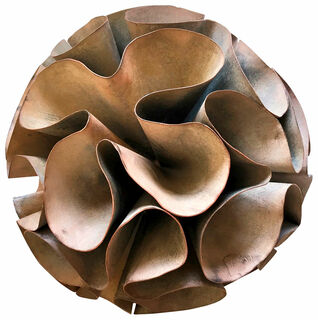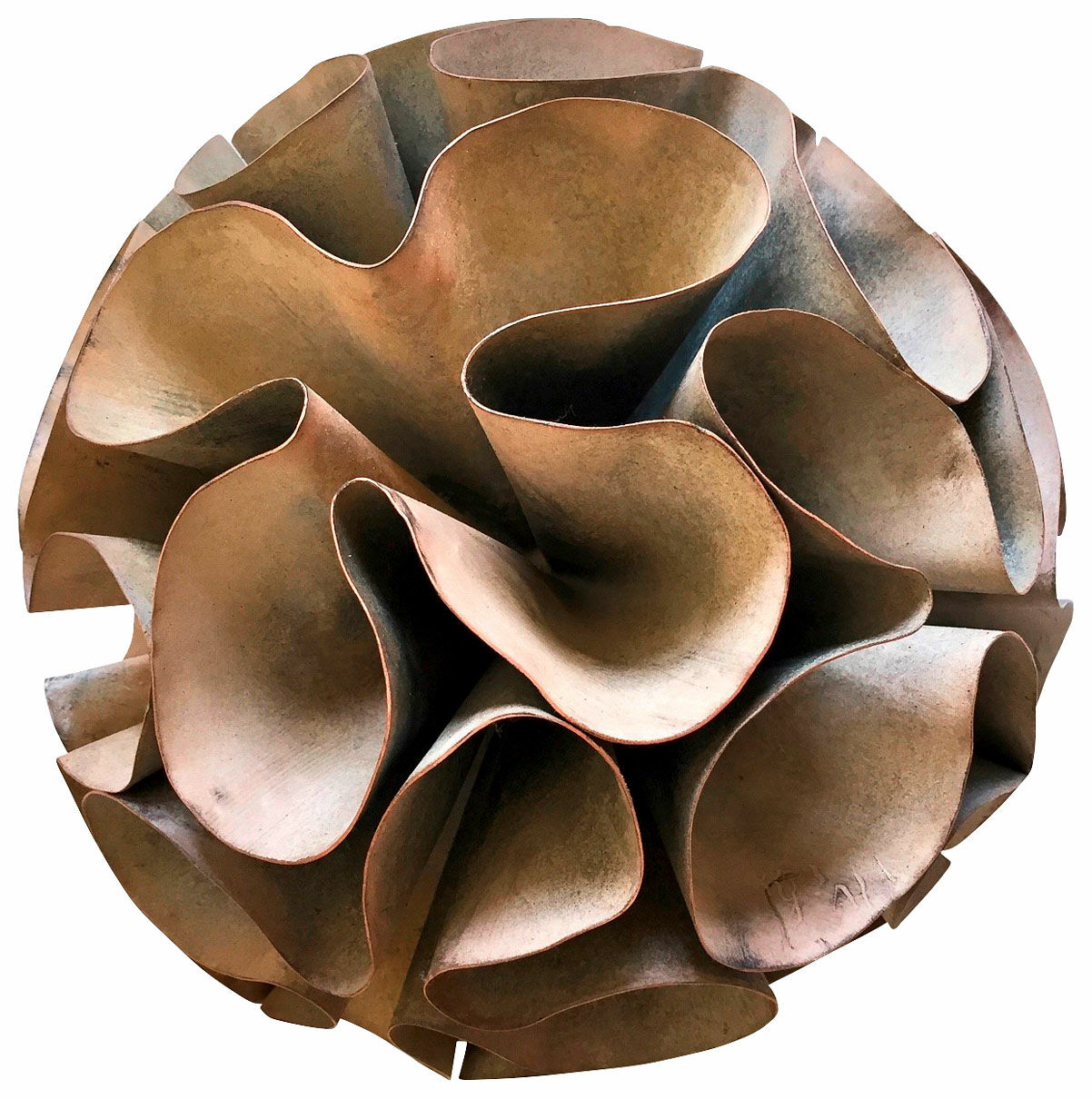Sculpture "Seed - Mother of Pearl" (2019) (Original / Unique Piece), pigmented copper
Sculpture "Seed - Mother of Pearl" (2019) (Original / Unique Piece), pigmented copper
Quick info
unique piece | signed | copper | pigmented | Ø 26 cm | weight approx. 3.2 kg
Detailed description
Sculpture "Seed - Mother of Pearl" (2019) (Original / Unique Piece), pigmented copper
The original idea for Garda Alexander's "Seed" sculptures came about during a dive. Inspired by the fascinating underwater world, she created a model out of paper and later out of wax. During the creation process, she found similarities to the shape of a brain or a seed, which she did not see at first. Nature itself inspired her, and she wants to inspire the viewers of the works in the same way.
Garda Alexander's interpretation of a symbolic or metaphorical representation of our mind as the creator of our reality. Unique piece made of light pigmented copper, signed. Size 26 x 26 x 26 cm (h/w/d). Weight approx. 3,2 kg.

About Garda Alexander
The works of the German-born artist Garda Alexander, who lives in Switzerland, are inspired by nature and people. By combining unique shapes and colours, she allows them to be expressed in a meaningful way.
Alexander artistically focuses on painting, sculpture, and spatial concepts. Her works are very versatile, as is her artistic education, which she completed in various countries. The study of human medicine has significantly influenced her creative work, leading to the development of a symbolically charged artistic form concept. Alexander's curiosity drives her to continually explore new materials and techniques, expressing her thoughts and views through them.
Copper is the oldest metal known to mankind and is used for crafts – after all, since 8000 B.C - a whole epoch of the Neolithic period is named after it.
This fascinating metal experienced an artistic peak in the 16th century with the copperplate engraving. Picasso appreciated this technique for its sharp lines and contributed to its revival today. Moreover, copper has firmly established itself in the branch of sculpture.
A plastic work of sculptural art made of wood, stone, ivory, bronze or other metals.
While sculptures from wood, ivory or stone are made directly from the block of material, in bronze casting a working model is prepared at first. Usually, it is made of clay or other easily mouldable materials.
The prime time of sculpture after the Greek and Roman antiquity was the Renaissance. Impressionism gave a new impulse to the sculptural arts. Contemporary artists such as Jorg Immendorf, Andora, and Markus Lupertz also enriched sculptures with outstanding works.
A one-of-a-kind or unique piece is a work of art that has been personally created by the artist. It exists only once due to the type of production (oil painting, watercolours, drawing, etc.).
In addition to the classic unique pieces, there exist the so-called "serial unique pieces". They present a series of works with the same colour, motif and technique, manually prepared by the same artist. The serial unique pieces are rooted in "serial art", a type of modern art, that aims to create an aesthetic effect through series, repetitions and variations of the same objects or themes or a system of constant and variable elements or principles.
In the history of arts, the starting point of this trend was the work "Les Meules" (1890/1891) by Claude Monet, in which for the first time a series was created that went beyond a mere group of works. The other artists, who addressed to the serial art, include Claude Monet, Piet Mondrian and above all Gerhard Richter.


